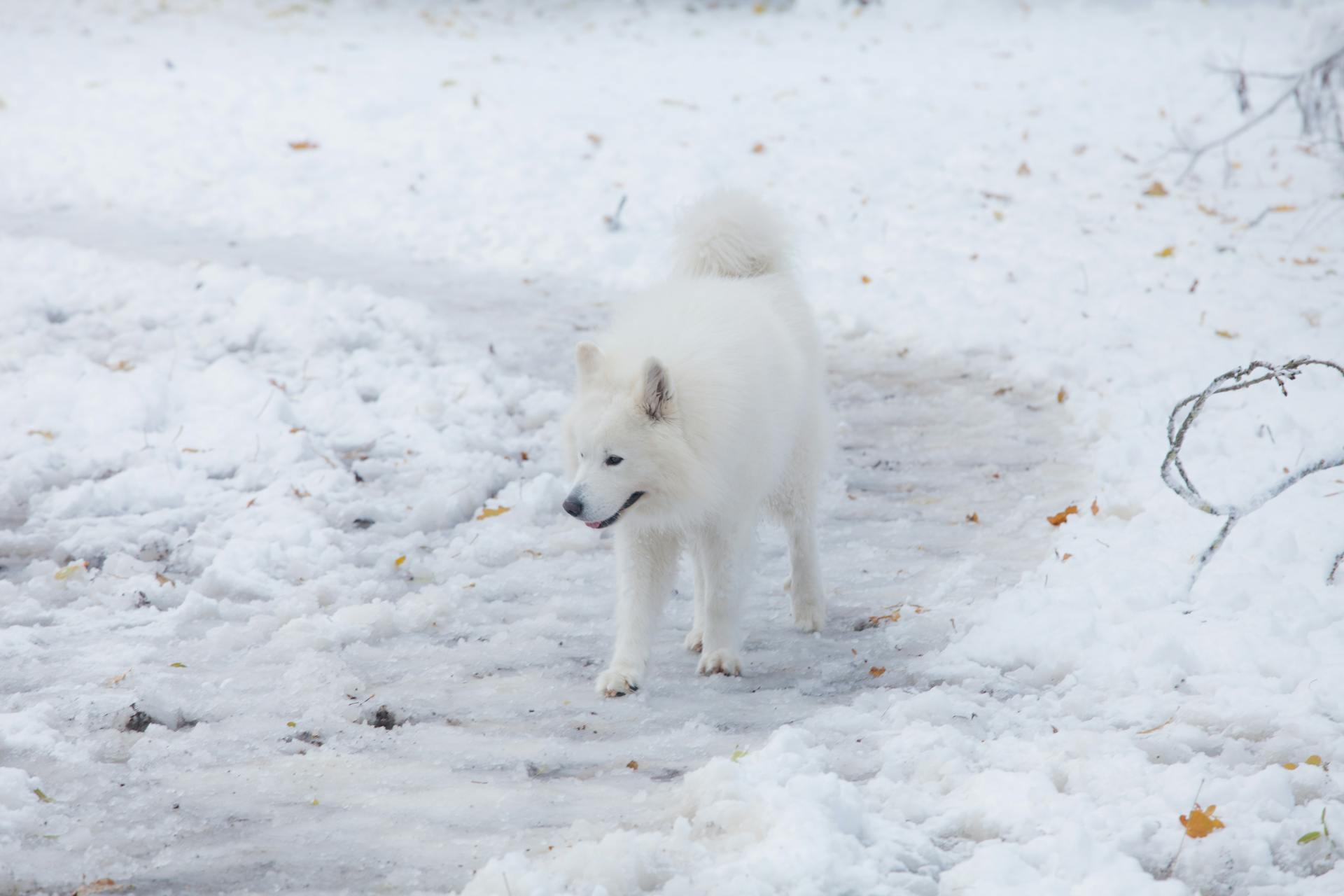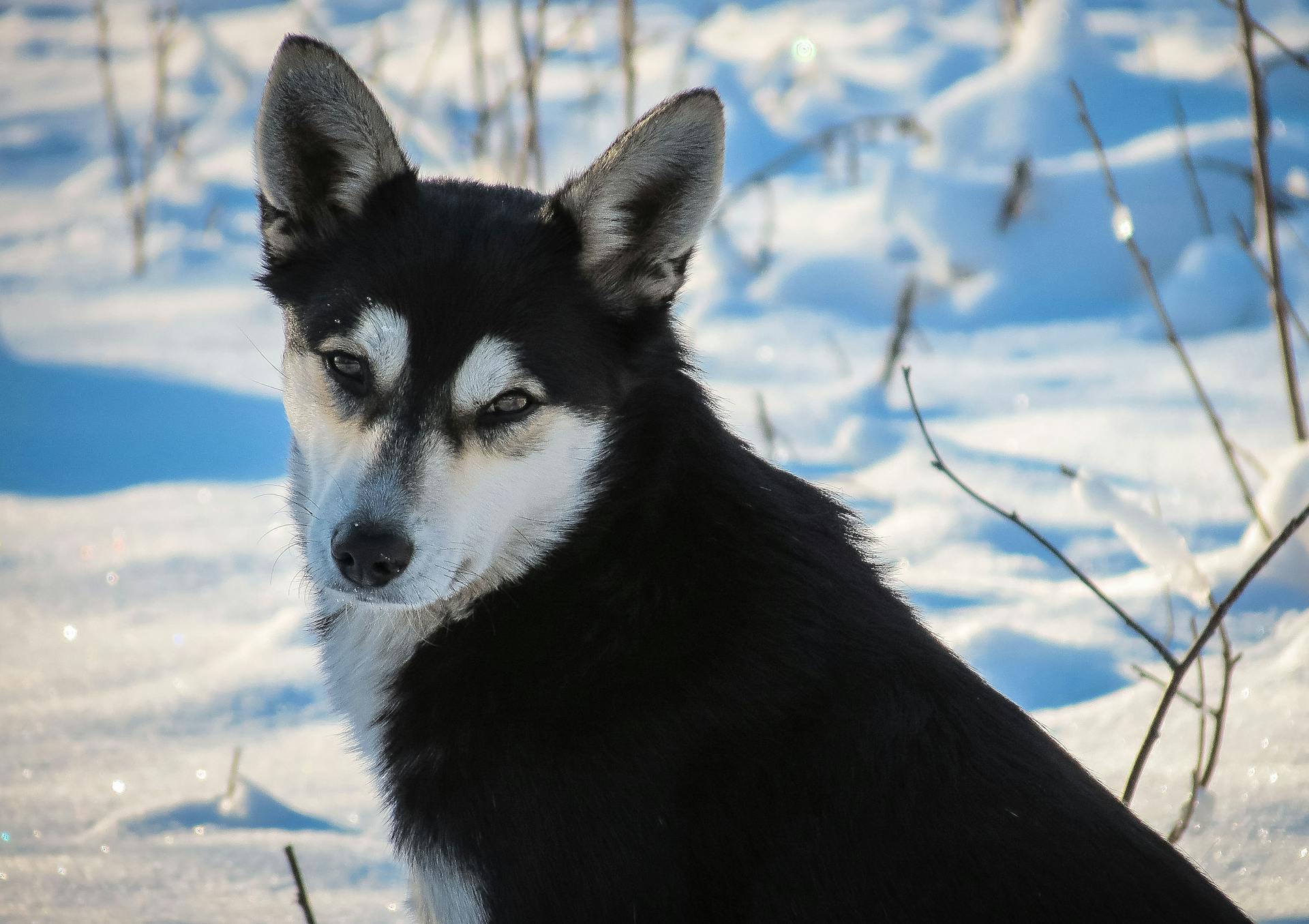
The Canadian Eskimo Dog is a majestic breed with a rich history and a strong instinct to hunt and pull sleds. They originated in the Arctic regions of Canada and were bred to be a working dog, designed to withstand the harsh weather conditions.
Their thick double coat is one of their most distinctive features, with a soft undercoat and a coarse outer coat that sheds snow and ice. They require regular grooming to prevent matting and tangling.
Canadian Eskimo Dogs are known for their intelligence, courage, and loyalty. They are highly trainable and make great companions for active families.
Puppies
Puppies are energetic and curious, making early socialization and training a must.
These dogs tend to be trusting and open, but can become more fearful as they get older, so introducing them to many people and places young can help prevent behavioral problems later.
Be prepared for a period of teething, and have plenty of chew toys on hand to keep them occupied.
Puppy training classes can be super helpful with training and socialization.
You'll need to search for a quality breeder, as these dogs are often hard to find and may require a wait on a list.
Temperament
The Canadian Eskimo Dog's temperament is a unique blend of loyalty and independence. They're highly trainable due to their loyalty to their owners, but can also be independent at times.
These dogs are loving and form strong bonds quickly with their families. However, they can be aloof with strangers, making them great watchdogs that alert their owners to anything unusual.
They're naturally alert to their surroundings, which is a leftover from their original work environment. This trait makes them perfect for owners who want a dog that can keep them safe.
Canadian Eskimo Dogs retain their high energy level from their breeding days, requiring lots of physical and mental stimulation to prevent destructive behavior.
A different take: Shiba Inu Owners
Suitability for Families
Canadian Eskimo Dogs can be great companions for families, but they require a lot of attention and exercise. They thrive in active households where they can get plenty of physical and mental stimulation.
If you have limited space or a busy schedule, a Canadian Eskimo Dog might not be the best fit. They need regular training and socialization to prevent them from becoming aloof or aggressive.
Clear, consistent training is crucial for these dogs, especially if you have young children or frequent visitors. They can be challenging to manage if you're not experienced in dog training.
Proper socialization is essential for Canadian Eskimo Dogs, especially when they're young. This will help them become confident and calm in the presence of strangers.
Pet Compatibility
Canadian Eskimo Dogs can be a handful when it comes to other pets in the household.
They don't usually get along with smaller animals like cats, rodents, birds, and other pets because they have a strong prey drive.
Even with extensive socialization and training, they may still see these animals as prey and potentially harm them.
Canadian Eskimo Dogs can get along with other dogs when properly supervised, but introductions need to be slow and careful.
Their innate aloofness also carries over to strange dogs, so it's essential to introduce them slowly and under controlled circumstances.
Early socialization and training can help your Canadian Eskimo Dog develop appropriate social behaviors, but careful supervision is always required.
Explore further: When Should I Breed My Female Dog
Owning Essentials
If you're considering bringing a Canadian Eskimo Dog into your family, there are a few essentials you'll need to get right from the start.
First and foremost, Canadian Eskimo Dogs are naturally energetic dogs that require a lot of exercise to stay happy and healthy.
You'll need to budget for high-quality dog food that meets their nutritional needs, which can be around $50 to $75 per month.
Canadian Eskimo Dogs are also known for their thick double coats, which shed heavily twice a year.
For your interest: What Nutrients Do Dogs Need in Homemade Dog Food
Health and Care
Health and care for Canadian Eskimo Dogs requires attention to their exercise needs and potential health issues. They need a lot of exercise, beyond just walking, and are well-suited for dog sports like carting and mushing.
Their large size makes them prone to hip dysplasia, a condition that can lead to lameness if left untreated. Regular veterinary check-ups can help manage this condition.
Eye problems are also common in Canadian Eskimo Dogs, particularly cataracts and entropion, which can cause vision loss and corneal damage.
Their coat sheds once a year, requiring daily grooming during this time. In contrast, most of the year it only needs brushing one or two times a week.
Here are some potential health issues to watch out for:
- Eye problems (cataracts, entropion)
- Allergies
- Cryptorchidism
- Bloat
- Degenerative myelopathy
- Hip dysplasia
Owning Essentials

Having a well-stocked first aid kit is crucial in case of minor accidents or injuries. Include items like bandages, antiseptic wipes, pain relievers, and any medications you or your family members may need.
Asthma and allergy sufferers should always carry an EpiPen or other emergency medication with them. Make sure to check the expiration date regularly.
Asthma and allergy sufferers should also have a plan in place in case of an emergency, including knowing what to do and who to contact.
Regularly cleaning and disinfecting high-touch areas like doorknobs, light switches, and countertops can help prevent the spread of illness.
Asthma and allergy sufferers should also have a plan for managing their condition during extreme weather conditions like thunderstorms or wildfires.
Health and Conditions
The Canadian Eskimo Dog is generally a healthy breed, but like any breed, they can be prone to certain health issues. Hip dysplasia is a common problem, which occurs when the dog's hips don't form properly, leading to excessive wear and tear.

This condition can often be managed with medication, but in some cases, surgery may be required to repair the hip. In extreme cases, lameness can occur.
Eye problems are also a concern, with cataracts and entropion being the most common issues. Cataracts can lead to gradual vision loss, especially in older dogs.
Entropion involves the eyelid turning inward, potentially damaging the cornea. This can be painful and may require surgery to correct.
Gastric torsion is a life-threatening condition that can occur in Canadian Eskimo Dogs. It's a medical emergency that requires immediate attention, as the stomach twists and traps air, leading to tissue death.
Here are some health issues that can affect Canadian Eskimo Dogs:
- Eye problems, including cataracts and entropion
- Allergies
- Cryptorchidism
Some other health issues that can affect the breed include:
- Bloat
- Degenerative myelopathy
- Hip dysplasia
Return
As you navigate the complex world of healthcare, it's essential to know when and how to return to a healthy state.
The return to good health often begins with a thorough understanding of the causes of illness, which can be linked to factors such as poor diet, lack of exercise, and inadequate sleep.

Returning to a healthy lifestyle requires a commitment to making sustainable changes, such as incorporating more fruits and vegetables into your diet, as seen in the section on "Nutrition".
The American Heart Association recommends at least 150 minutes of moderate-intensity aerobic physical activity or 75 minutes of vigorous-intensity aerobic physical activity per week, as highlighted in the "Exercise" section.
Regular physical activity can have a significant impact on overall health, including reducing the risk of chronic diseases like heart disease and diabetes.
By prioritizing self-care and making healthy choices, individuals can take the first steps towards a return to optimal health.
Incorporating stress-reducing techniques, such as meditation and deep breathing, can also play a crucial role in the return to good health, as discussed in the "Mental Health" section.
A fresh viewpoint: Kirkland Dog Food Making Dogs Sick
Appearance and Grooming
The Canadian Eskimo Dog has a powerful and athletic build, with a physique that suggests hard work rather than speed. They should be imposing in appearance.
Their coat is thick and dense, with a soft undercoat and stiff guard hairs. They have a distinctive mane of thick fur around their neck, which is particularly impressive in males. This adds an illusion of additional size.
You'll need to brush your Canadian Eskimo Dog regularly, ideally at least once a week, to prevent matting and tangling. Daily brushing may be necessary during shedding season to remove loose fur.
Appearance
The Canadian Eskimo Dog is a powerful and athletic breed, built for hard work rather than speed. Its physique is imposing, with a sturdy build that's hard to ignore.
Erect, triangular ears are a defining feature of this breed, similar to those of American wolves. Its heavily feathered tail is carried over its back, adding to its overall impressive appearance.
Males are distinctly more masculine than females, with a more muscular build and a slightly longer coat. Females, on the other hand, are finer boned and often have a slightly shorter coat.
The breed's coat is very thick and dense, with a soft undercoat and stiff, coarse guard hairs. This dense coat is essential for its original purpose as a working dog in the Arctic.
A distinctive mane of thick fur around its neck adds an illusion of additional size, particularly in males. This mane is smaller in females, but still a notable feature of the breed.
The Canadian Eskimo Dog can be almost any colour, with no one colour or colour pattern dominating. Solid white dogs are common, as are white dogs with patches of another colour on the head or body.
Additional reading: Tri Colour Yorkshire Terriers
Grooming
Grooming is a crucial part of your Canadian Eskimo Dog's life, and it's actually not as high maintenance as you'd think.
Their thick coat is perfect for withstanding the harsh Arctic climate, but it does require regular brushing to prevent tangles and matting.
You should aim to brush your dog at least once a week, using a slicker brush and de-matting comb to remove any knots they might have.
During shedding season, daily brushing may be necessary to prevent a furry mess in your house.
Always brush in the direction of hair growth, starting from the head and working your way down the back.
Pay close attention to areas prone to matting, such as behind the ears and under the legs, where a comb will come in handy.
You don't need to bathe your Canadian Eskimo Dog often, as overbathing can strip their coat of its natural oils and cause irritation.
Only bathe them when they're absolutely necessary, like when they're muddy or smelly.
Trimming their nails regularly is also essential, as long nails can cause pain and irritation, and may even split and lead to bleeding and potential infections.
Checking their ears weekly for signs of infection, such as redness and odor, is a good habit to get into, even though they're not prone to ear infections.
Here's an interesting read: What to Feed Dogs If Out of Dog Food
Frequently Asked Questions
Is a Canadian Eskimo Dog a husky?
No, Canadian Eskimo Dogs and Huskies are distinct breeds with different characteristics, despite both being bred for cold climates. If you're considering one as a pet, understanding their unique needs and temperaments is essential.
Are Canadian Eskimo dogs rare?
Yes, Canadian Eskimo Dogs are considered a rare breed, with a population of 300 or less purebred, registered dogs. Their low numbers make them a vulnerable breed in need of conservation efforts.
How much does a Canadian Eskimo Dog cost?
The Canadian Eskimo Dog typically costs around $8,750. This rare breed's high price reflects its ancient origins and limited availability.
How long does a Canadian Eskimo Dog live?
Canadian Eskimo Dogs typically live for 10 to 15 years. Their lifespan can vary depending on several factors, including diet, exercise, and health conditions.
Sources
Featured Images: pexels.com


